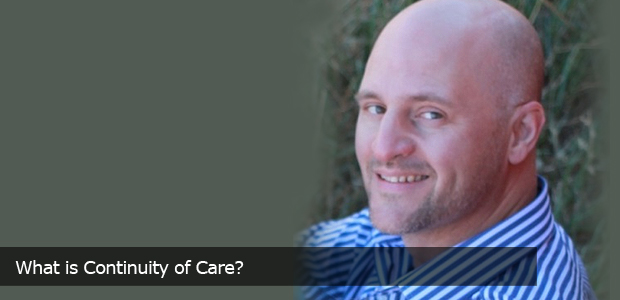What is Continuity of Care?

You may have heard the phrase ‘continuity of care’ and wondered what it means. You may have also wondered if it relates to you as a patient, or to your healthcare providers.
Well, both patients and providers have roles to play. For patients, it means their experience of care is connected and well-organized through their entire care journey, from care provider to care provider, no matter in what facility or environment they may be accessing their care. It also means that they know:
- What the plan of care is
- What will happen next
- Who is involved in providing and at times directing their care
- They are being understood and treated as a ‘whole person'
For caregivers and healthcare administrators, there are two types of continuity that help make sure the patient experience meets all of the above. We call these “relational continuity” and “informational continuity”.
In the past, relational continuity was provided through your family physician. He or she served as advisor, advocate, and friend as you moved through various stages of medical care. Since then, we have seen huge population growth, many people moving into larger urban centres, and unprecedented technological advancements. Medicine is increasingly more complex, and relational continuity requires a variety of caregivers to provide the same care that one person was able to provide in the past.
Care teams are made up of a variety of providers. For example, Alberta has a number of Primary Care Networks (PCNs) where your family physician is still the ‘navigator’ of your care, but care is augmented by a team that may be co-located or virtual. The care is more team based, and could be provided by physicians, nurses, dietitians, pharmacists and others. It’s called a medical home. It has a patient centred approach, and incorporates access to services including health promotion, primary care services, chronic disease management and health education.
Informational continuity helps ensure that when many different providers are involved in caring for individuals, communication of information is seamless, up to date, efficient and accurate. Technology has a big role to play in making that happen. An example is the new personal health record that will eventually be available on MyHealth.Alberta.ca that will help Albertans be partners in their continuity of care. When done well, all care providers talk to each other effectively and the information is captured in one place, where all can access it. This helps towards high quality care over time that is also cost-effective, sustainable, and most importantly patient-centred. Increasing the role of the patient in managing their health and healthcare records is a vital part of the future of continuity in healthcare.

